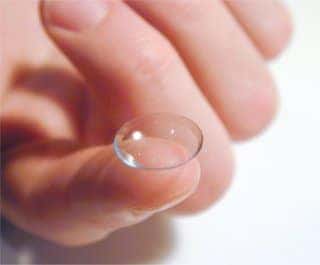
Contact Lenses
Considering Contact Lenses?
Considering contact lenses? Tried contact lenses before but didn’t like them? Having problems with your contacts? We can help! Drs. Williams and Bloom are experienced, patient, and knowledgeable. Let them work with you to find the proper contact lens for your needs. Unlike the chain stores or the online contact lens mills, we don’t sell you just what you have in stock; we take the time to fit you with the proper lenses. And now, with our brand new online ordering system, replenishing your supply is as simple as a few mouse clicks. Plus you’ll find our prices are very competitive.
Read more about online ordering →
A typical Weber Vision Care contact lens examination gives our doctors a comprehensive look at your ocular health and your goals. Because of the various steps required to find the proper lens fit, you’ll need to arrange a bit of extra time for a contact lens examination.
Read more about a Weber Contact Lens Exam →
Applying and removing your contact lenses isn’t that difficult, once you get used to it! Our friendly contact lens techs will help you every step along the way. Here’s a helpful “Step by Step” overview of how to use your contact lenses:
- Learn how to use Contact Lenses
Fear not – after a few times, it’ll become second nature. In the meantime, see how it’s done.
Putting contact lenses on: step by step.
STEP 1: Thoroughly wash and dry your hands with soap and a clean towel.
STEP 2: Rinse your lens with solution to remove any trace of debris. (If you’re using a new lens, or 1-DAY ACUVUE® Brand Contact Lenses, simply take them out of the package, no solution is needed)
Tip: To avoid mixing up your contact lenses, always apply and remove the lens for your RIGHT eye first.STEP 3: Place the lens on the tip of your index finger. Be sure the lens is correctly oriented by checking the inside–out marker.
STEP 4: Use your other hand to hold your upper eyelid so you won’t blink.
STEP 5: Pull down your lower eyelid with the other fingers of your applying hand.
STEP 6: Look up at the ceiling and gently place the lens on the lower part of your eye.
STEP 7: Slowly release your eyelid and close your eye for a moment.
STEP 8: Blink several times to center the lens. You’re all set.
STEP 9: If your lens feels uncomfortable, remove it and inspect for damage or debris. If it’s damaged, discard it. Otherwise, rinse with more solution and reapply.
Download (20 KB)
Taking contact lenses off: step by step.
STEP 1: Thoroughly wash and dry your hands with soap and a clean towel.
STEP 2: Look up at the ceiling and pull down your lower eye lid.
Tip: To avoid mixing up your contact lenses, always apply (and remove) them in the same order.STEP 3: Bring your index finger close to your eye until you touch the lower edge of the lens.
STEP 4: Slide the lens down to the lower white part of your eye.
STEP 5: Gently squeeze the lens between your thumb and index finger and remove it.
STEP 6: Remove the other lens following the same procedure.
Download (20 KB)
Contact Lens Varieties

- Daily-wear soft lenses are made from soft, flexible plastics that allow oxygen to pass through to the eyes. Daily-wear lenses generally require a very short adaptation period, are available in tints and bifocals, and are generally great for active lifestyles. Because you dispose of your single-use lenses at the end of each day, generally these lenses require no care!
- Extended-wear soft lenses can usually be prescribed for up to thirty days of wear without removal. They offer most of the benefits of daily-wear; however, you may have to clean them.
- Planned replacement soft lenses are replaced on a planned schedule, most often every two weeks, monthly or quarterly.
- Rigid Gas Permeable (RGP) lenses are made of less flexible plastics than soft lenses. RGP lenses may provide sharper vision than do soft contact lenses. RGP lenses also are more durable as they can least for a year or two. These lenses, of course, require daily care.